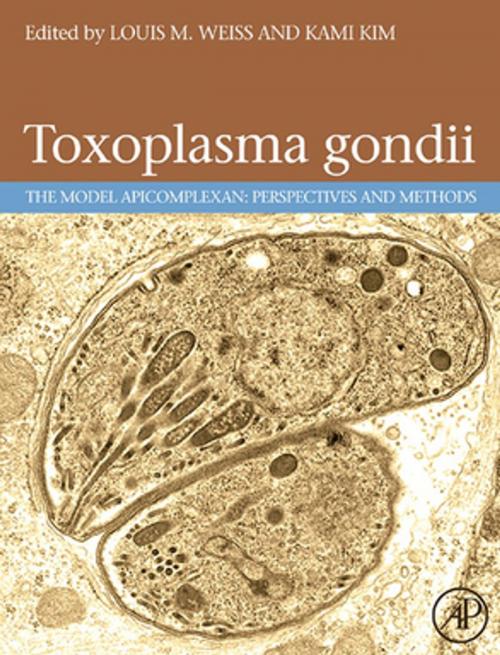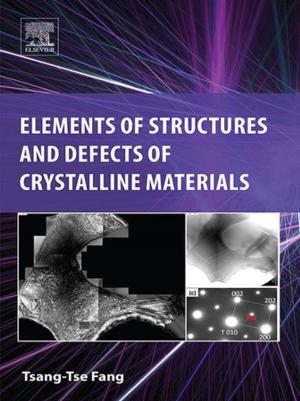Toxoplasma Gondii
The Model Apicomplexan. Perspectives and Methods
Nonfiction, Science & Nature, Science, Other Sciences, Molecular Biology, Biological Sciences, Microbiology| Author: | ISBN: | 9780080475011 | |
| Publisher: | Elsevier Science | Publication: | April 28, 2011 |
| Imprint: | Academic Press | Language: | English |
| Author: | |
| ISBN: | 9780080475011 |
| Publisher: | Elsevier Science |
| Publication: | April 28, 2011 |
| Imprint: | Academic Press |
| Language: | English |
Toxoplasmosis is caused by a one-celled protozoan parasite known as Toxoplasma gondii. In the United States, it is estimated that approximately 30% of cats, the primary carriers, have been infected by T. gondii. Most humans contract toxoplasmosis by eating cyst-contaminated raw or undercooked meat, vegetables, or milk products or when they come into contact with the T. gondii eggs from cat feaces while cleaning a cat's litterbox, gardening, or playing in a sandbox. Approx 1 in 4 (more than 60 million) people in the USA are infected with the parasite, and in the UK between 0.5 and 1% of individuals become infected each year. By the age of 50, 40% of people test positive for the parasite. The predilection of this parasite is for the central nervous system (CNS) causing behavioral and personality alterations as well as fatal necrotizing encephalitis, and is especially dangerous for HIV infected patients.
Though there have been tremendous strides in our understanding of the biology of Toxoplasma gondii in the last decade, there has been no systemic review of all of the information that has accumulated. Toxoplasma gondii provides the first comprehensive summary of literature on this organism by leading experts in the field who were responsible for organising the 7th International Congress on Toxoplasmosis in May 2003. It offeres systematic reviews of the biology of this pathogen as well as descriptions of the methods and resources used. Within the next year the T. gondii genome will be completed making this an indispensable research resource for biologists, physicians, parasitologists, and for all those contemplating experiments using T. gondii.
* Serves as a model for understanding invasion of host cells by parasites, immune response, motility, differentiation, phylogenetics, evolution and organelle acquisition
* Discusses the protocols related to genetic manipulation, cell biology and animal models while also providing reference material on available resources for working with this organism
Toxoplasmosis is caused by a one-celled protozoan parasite known as Toxoplasma gondii. In the United States, it is estimated that approximately 30% of cats, the primary carriers, have been infected by T. gondii. Most humans contract toxoplasmosis by eating cyst-contaminated raw or undercooked meat, vegetables, or milk products or when they come into contact with the T. gondii eggs from cat feaces while cleaning a cat's litterbox, gardening, or playing in a sandbox. Approx 1 in 4 (more than 60 million) people in the USA are infected with the parasite, and in the UK between 0.5 and 1% of individuals become infected each year. By the age of 50, 40% of people test positive for the parasite. The predilection of this parasite is for the central nervous system (CNS) causing behavioral and personality alterations as well as fatal necrotizing encephalitis, and is especially dangerous for HIV infected patients.
Though there have been tremendous strides in our understanding of the biology of Toxoplasma gondii in the last decade, there has been no systemic review of all of the information that has accumulated. Toxoplasma gondii provides the first comprehensive summary of literature on this organism by leading experts in the field who were responsible for organising the 7th International Congress on Toxoplasmosis in May 2003. It offeres systematic reviews of the biology of this pathogen as well as descriptions of the methods and resources used. Within the next year the T. gondii genome will be completed making this an indispensable research resource for biologists, physicians, parasitologists, and for all those contemplating experiments using T. gondii.
* Serves as a model for understanding invasion of host cells by parasites, immune response, motility, differentiation, phylogenetics, evolution and organelle acquisition
* Discusses the protocols related to genetic manipulation, cell biology and animal models while also providing reference material on available resources for working with this organism















